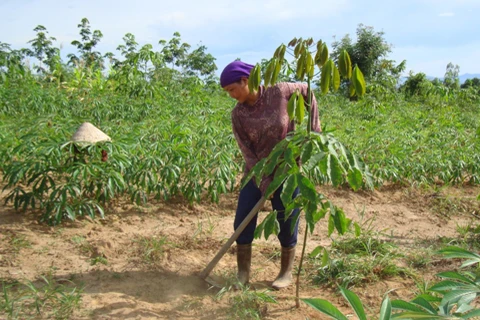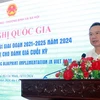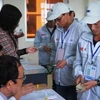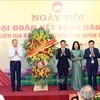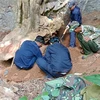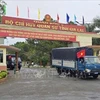 Kha Thi Xuan, a member of Khan Tan Co-operative in Hoa Binh province’s Mai Chau District, plants vegetables on a large scale. Joining the co-operative brings higher economic efficiency for its members as they no longer worry about the sale of their products.(Source:mpi.gov.vn)
Kha Thi Xuan, a member of Khan Tan Co-operative in Hoa Binh province’s Mai Chau District, plants vegetables on a large scale. Joining the co-operative brings higher economic efficiency for its members as they no longer worry about the sale of their products.(Source:mpi.gov.vn)Hanoi (VNA) - As many as 192,000 households have directly benefitted from the Northern Mountains Poverty Reduction Project, said Nguyen Thanh Duong, Director General of the Department for Agricultural Economy, Ministry of Planning and Investment.
These households from 259 communes belong to six northern mountainous provinces where the project is being implemented, namely Dien Bien, Lai Chau, Son La, Yen Bai, Hoa Binh and Lao Cai, regarded as the poorest communities in Vietnam.
Speaking at a conference on June 27 held to review the project’s implementation, Duong said the project aimed to combine and link small-sized production households as common interest groups (CIG) to carry out common livelihood activities.
This will enable CIG members to have access to inputs, production and husbandry supporting services such as veterinary, agricultural extension services, access to the market to purchase varieties and seedlings, input materials and the market to sell products; helping to improve added value from production activities and improve production efficiency.
After eight years of implementation, the project has invested in and put into operation more than 7,861 communal-level infrastructural works including nearly 4,000 rural road works with more than 3,840km, and 1,355 hydraulic works which supply irrigation water for 16,000 hectares of production land.
As many as 13,568 CIG have been set up with 157,000 members, half of them women, while 107 production investment links were made with the participants of 22,000 households, helping raise the average income of each household to 500,000 – 800,000 VND (22-35 USD) per month.
About 220,000 households have been helped by livelihood assistance activities.
“The common interest groups model is very new to the northern mountainous provinces. From unequal groups in terms of capacity and knowledge, they were supported with livelihood assistance to turn into groups and co-operatives with sustainable development even when the project ends,” Duong said.
According to Duong, after the initial support from the project, the provinces will look into their potential to invite the participation of businesses. At present, 70 enterprises have joined the project, helping form some specialised production areas for unique local products.
Nguyen Quoc Khanh, vice chairman of the Son La provincial People’s Committee, said the project has contributed to sustainable poverty reduction in some districts.
Nguyen Thi Thu Lan, a representative of the World Bank, also the project director, said that: “It is common in most World Bank-funded projects that local residents are always proactive in self-organising their production, linking production to the market demand with a view to increase income and diversify income sources.”
Through poverty reduction projects, the World Bank expected that capacity of local communities was strengthened, helping the Vietnamese Government realise the poverty reduction target, she said.
Implemented in Vietnam since 2010, the Northern Mountains Poverty Reduction Project has total investment of 275 million USD. Of which 250 million USD was funded by the World Bank and the rest sourced from Government funds. - VNA
VNA




